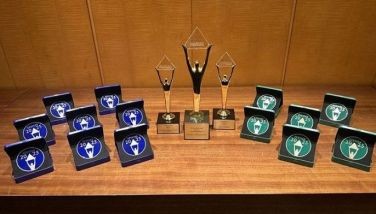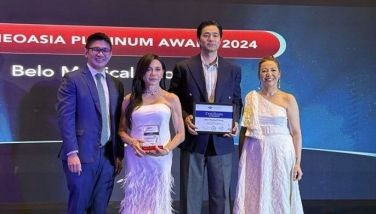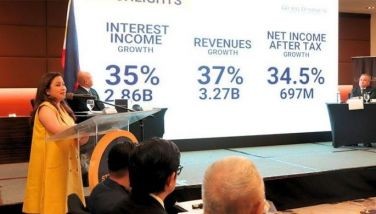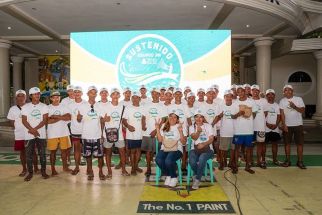Lucky strikes

November 7, 2006 | 12:00am
 Next only to the United States, the Philippines is the largest geothermal producer in the world. The Philippine National Oil Co. – Energy Development Corp. (PNOC-EDC) has brought the country on that global stage. Not bad for a company born out of crisis.
Next only to the United States, the Philippines is the largest geothermal producer in the world. The Philippine National Oil Co. – Energy Development Corp. (PNOC-EDC) has brought the country on that global stage. Not bad for a company born out of crisis.
Over the last three decades, geothermal energy development has been the government’s most successful strategy in improving our energy self reliance. It’s one of the (few) strong points of the Marcos regime which initiated the country’s foray into indigenous resource development in 1976 with the creation of PNOC-EDC.
Back then, we were importing 95 percent of our energy requirements. Thus, the government faced a real crisis when the Yom Kippur War in 1973 prompted the Arabs to impose an oil embargo that cut global supplies by as much as 15 percent. "During that crisis, PNOC embarked on a shotgun approach to energy development. Geothermal was not even the brightest among the prospects at that time. Oil was, given the successful Nido oil strike in Palawan. Geothermal development was proceeding on the basis of what luck was bringing us," recalled a PNOC executive.
Today, Lady Luck must be on our side as the lucky strikes in geothermal development have resulted in 1,904 megawatts (MW) of installed geothermal capacity, 60 percent of which is provided by PNOC-EDC.
It has substantially reduced our dependence on imported oil. Geothermal now accounts for 19 percent of the country’s power supply. Considering the operations of PNOC-EDC alone, we have generated foreign exchange savings of about $3.2 billion from over 75,000 gigawatt-hours of steam and electricity it has produced since 1983.
"As the caretaker of a vital resource, PNOC-EDC had to stay resilient against the daunting and numerous economic, technological, environmental, social, as well as political challenges, that we encountered in the past 30 years – mainly in the interest of protecting the energy security of the Philippines," PNOC-EDC President Paul Aquino told the company’s various stakeholders some months ago.
According to Aquino, as the country’s largest geothermal producer, the challenge that looms over PNOC-EDC is to help the Philippines become the largest geothermal producer in the world. This is not farfetched. US experts have said that we are sitting on one of the largest geothermal reserves in the world. Recent estimates place the country’s geothermal resources at 4,000 MW. Combined with the expertise PNOC-EDC has built over the last 30 years, there’s little doubt that we can achieve top status.
Based on its 2006 Report to Stakeholders, PNOC-EDC can already be considered the world’s largest integrated geothermal company. The Report states that PNOC-EDC is world-renowned for its expertise in geosciences, drilling, engineering and construction, environmental management, as well as in research and development. Its manpower includes 44 geologists, 15 reservoir engineers, 24 well-drilling engineers, and 675 engineering and scientific experts. Of these, 122 have been foreign-trained and three are even internationally-known experts. Even now, these experts carry out "reverse technology transfer" through foreign consultancy contracts, which is perhaps one of the firsts in the country. Todate, PNOC-EDC has participated in geothermal projects in eight other countries.
What makes PNOC-EDC stand out is its dedication to what Aquino calls the "intangibles." In its three decades of operation, PNOC-EDC has provided livelihood, education, health and environment assistance to the 84 barangays surrounding its five project sites. These barangays have a combined estimated population of 18,900 households. By supporting farmers’ associations with livelihood projects, the company has enabled many poor families to overcome poverty. The target is for these families to surpass the poverty threshold level almost two-fold by earning P100,000 per household.
In education, PNOC-EDC has provided financial assistance to 815 high school scholars and 15,351 elementary students. It has become a model partner of the Department of Education in its Adopt-A-School Program. Last year, PNOC-EDC launched its "Schools for Excellence" (SFE) project, which benefits hundreds of school kids in the mountain barangays of Tongonan, Leyte.
Aquino stresses that as a government-owned and -controlled corporation, PNOC-EDC is in a unique position to install the best practices from both the government and private sectors. Well, 32 awards attest to the company’s diligence in doing so.
The proposals, once approved by funding agencies, will help improve the plight of the constituents of one of the poorest regions in the country. Among these are a municipal vocational training center, water systems, a public transportation terminal complex, a sanitary landfill, an integrated trading center, an abaca industry project, and a grain center. Funding agencies who will for sure give them their listening ears, are the International Labor Organization, Food and Agricultural Organization, the German Technical Cooperation Agency, the Japanese Embassy, the Korean International Cooperation Agency, the European Union, German Agency for Financial Cooperation, Land Bank of the Philippines, the Agencia Espanola Cooperacion International, United Nations Industrial Development Organization, and the European Commission-Small Grants Facility.
The investment mission is headed by the LGUMPT project director, Lurraine Baybay Villacorta, and NEDA regional director, Carmencita S. Cochingco.
I read the final report that the NBI submitted to Justice Sec. Raul Gonzalez. What is interesting is that no mention has been made in public about the last recommendation, which was to initiate administrative proceedings against Pasig City Mayor Vicente Eusebio for negligent failure.
In that report, the NBI had recommended that administrative charges be initiated against Mayor Eusebio "for lack of foresight by issuing the permit for the first anniversary of Wowowee. Despite being apprised of the possibility of a stampede by the organizers themselves, he nonetheless issued the permit without requiring the organizers to institute and submit contingency plans for crowd management and control. Furthermore, he was also aware of the estimated 30,000 expected crowd, having emergency and disaster potential, but nonetheless issued a permit despite knowledge of the 17,000 carrying capacity of the Ultra. He should have revoked the permit when he has knowledge on the early morning of Feb. 4, 2006 that stampede is inevitable."
It determined that Mayor Eusebio is directly liable for negligent failure to ensure the safety of the public within his territorial jurisdiction, since he issued the permit himself.
The recommendation was for case records to be transmitted to the Department of Interior and Local Government (DILG) so that appropriate administrative action may be instituted against Mayor Eusebio.
What has happened since?
My email: dominimt2000@yahoo.com
BrandSpace Articles
<
>
- Latest
- Trending
Trending
Latest
Trending
Latest
Recommended

























